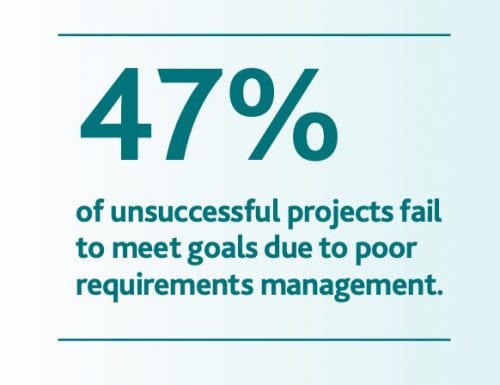

When it comes to the start of a project — there are two types of project managers: the ones who tend to be slackers and the ones who prepare everything in a rush.
The first type is likely to beat themselves up during the realization phase because deadlines and rush are killing them. The second type may be already fed up with the project because they kind of burnt out during the preparation.
So what do you do to balance things out? We suggest becoming the third type: the one with the routine. Yes, we will establish the plan for the plan.
The start of the project should be neither stressful nor lazy. In order to achieve balance, there are 5 simple steps. If you go through them before the project, you will not desperately try to meet your deadline during the next phase. At the same time, you will have a clear plan of the start so that you do not have to hastily jump from one task to another.
Let’s learn how to establish a solid foundation for your project’s success!


Project management tips.
Taken from: https://www.careeraddict.com
Step 1: Hire The Team
The team is one of the most important factors of success in project management. Their skills and ability to work in a team will define how everything will turn out. You may have an unlimited budget and tons of time, but it will not help if the team can not carry out the project.
Considering this fact, it is essential that you give yourself enough time to find the right teammates. There are some tips on how to find them and what to look for:
Review Your Project
First things first, you have to look through your project and define several things: what roles do you need, how many people do you need, and what their skills should be. It will be much easier to look for people if you know who exactly you need.
Pro tip: talk to the discipline leads. It is a wide-spread problem that project managers make assumptions about what kind of professionals they need, and it turns out that the list is incomplete or is a bit off.
Take a Look at the Budget
Budget is a big deal in project management and you have to be good at planning to stay within the budget. So look for teammates according to your budget to narrow down the search. Otherwise, you may find out in the middle of a project that you can not afford a professional and either go over the budget or change a teammate in the middle of it all.
You can also prioritize your professionals. Usually, there are fields that are more important than others. Therefore, choose more qualified professionals for fields that define success.
Check Availability
The next thing you should look at is their availability. If a person doubts whether they will have enough time or their schedule is unpredictable, it is better to check out other candidates. It is essential for the timing to find teammates that actually have time and energy.
Look at Candidates as a Team
It may happen that all the people on the team are really good professionals, but if you take them as a group, they just will not work together. In a team, every member complements each other and is ready to communicate.
If you have all the staff from an organization, find out what their relationships in the company are. It may be a bad idea to put two rivals in the same task. Do not hesitate to find a more fitting person midway because otherwise, simple tasks will be harder to complete and your team will be less motivated overall.
Think more in terms of which task every member could be performing and less in terms of fields. A person may not be overly qualified in the field but be very good at certain tasks within the field.
Step 2: Define Roles And Responsibilities
After you have your team sorted out, it is time to define roles and responsibilities. It is essential that every member understand their place in the project. It is hard to start doing something when you are told that you belong to the team that is responsible for social media coverage for the event website builder. Who makes the visuals, who does the text, what media do we cover? They will either spend time discussing who does what or do tasks together and not use the potential to the fullest. According to the PMI.org report, 47% of projects fail because there are no clear requirements.


Taken from: https://www.pmi.org
A project manager has to define who is more suitable for a specific role according to their skillset and personal skills. For example, in larger projects, there has to be a leader in the smaller team who can organize the work within the team and track their progress.
As we have discussed earlier, there are also people who are not experts in their field but who are really good at some tasks. You have to make sure that they are doing the tasks that they can perform the best.
In the end, each member has to know:
- their role
- expectations (a description of what they have to do)
- who they have to contact for reports and checks
- their budget
This small but important activity will ensure that all deadlines are kept, there are no duplicate tasks or situations where people think that other members do the tasks and they do not, and the tracking of progress is easier.
Step 3: Define Deadlines
Setting deadlines is not easy since you have to take a lot of things into consideration. You will usually have the date of when the project should be finished, but it is essential that you break it down into phases with its own deadlines. Otherwise, you and the team will procrastinate to the very last moment when the project will turn into hell to complete.
While breaking it down into a smaller set of tasks, a project manager should also contact the responsible person. Sometimes it is physically impossible to complete the task in such a short period of time. You should always ask the person whether a deadline is manageable.
At the same time, if you see that some team members ask for too extended deadlines, it is time to step up and check on why it takes them so long to do simple tasks.


Image Credit: unsplash
If you have already worked as a project manager, you should have figured out that deadlines tend to stretch. There are several reasons behind it:
- there are not enough milestones (you have a big deadline for big tasks and your team procrastinates till the last moment)
- someone is sick
- there are holidays
- you have set the wrong deadlines
- result quality is poor (for instance, 80% of organizations claim that they spend half of the time on rework)
- a task was forgotten
Sometimes it is the fault of a project manager, sometimes a team is off, and sometimes you just have no control over the situation (for example, sickness). Therefore, you should always plan a buffer.
A buffer means that a project manager adds extra time for tasks (without telling the team about it) so that if something gets in the way, the overall timeline is not affected.
In order to find just the right buffer, you have to know several things. First of all, consider what will happen if a deadline is not met. Will it really affect the overall timeline? If the answer is no, you do not need a buffer.
Secondly, think about what can go wrong with the task and how much time you will need to fix the wrong. Thirdly, consider the person who is behind the task. Estimate whether they can deliver great results on the first try or you will have to rearrange things.
You will be better at estimating the buffer after you gain more experience in project management. Sometimes it is the sixth feeling, really.
Step 4: Plan Discussion With Stakeholders
Stakeholders are people who are involved, will affect or be affected by the project. It does sound like basically anyone, right? So before planning the discussion, it is good to find stakeholders.
In order to define the stakeholders, ask yourself what their impact on the project may be, what you would want from them, and whether you can replace them. Stakeholders can be in any position: managers, support team members, or customers.
After you have defined who you want to contact, have a plan on what information you will want to get from them. Usually, it includes such points as:
- a problem solved
- risks
- definition of the project’s success
- competitors
- budget
- quality
- deadlines
- changes the project will make
It is good to keep the discussion in order. Otherwise, you may find yourself in a too-long meeting that actually did not define the project better. At Preply, they always have an agenda that they stick to no matter what: it is interesting to just elaborate and have new ideas out of it, but we give it no more than 20 minutes on the meeting.
It is also important to listen more than speak: it is the only way you can see a project from different perspectives and find out what to do, rather than assume what you have to do and make it clear to the stakeholders.
Step 5: Define Communication
Communication is one of the main responsibilities of a project manager and is another essential part of success.
If you have a good communication plan, you will be able to manage your team more efficiently, have a better relationship with stakeholders, and are more likely to meet deadlines. For instance, poor communication can cost $62,4 million to big companies annually.
A communication plan involves several steps:
Define Who You Communicate with
Write down a list of people that you have to communicate with. For example, stakeholders, teams, team managers, members who are responsible for essential tasks. They will define your goals and format. Someone is more likely to read email, while others are accessible through the call only.
Define Your Communication Goals
Every message has its goal: update, inquiry, discussion, problem-solving, etc. The goal defines the message format.
Define Your Format
It depends on the goal and the recipient. You may use Slack or any other workspace, emails, weekly meetings, presentations, reports, surveys, etc.
Define Frequency
It is better when everything has a routine. For example, if your stakeholders know that you will send them reports on Tuesdays, they are likely to give feedback quicker. More people are likely to attend a meeting if they know that it happens twice a week on Mondays at 9 am: they will reserve this time for a meeting specifically.
Challenges Of The Project Start
So these were 5 steps that will help you to make the start of the project more productive than ever. In this part, we are going to look at specific challenges that you may face during the start and how to overcome them.
Slow Planning
It happens a lot that project managers spend way too much time on planning the project: they think that they have a lot of time till the deadline and take their sweet time during the start. However, it may result in rushes during the realization stage that will affect quality. In order to plan faster, try to:
- set deadline for planning
- initiate call or meetings rather than waiting for a response to every email
- establish a routine of planning
- engage people early to make the project feel more real
Delays
After you have planned everything, stakeholders or team members start to put off the start date. What do you do in this case?
- find out what makes them put off the work
- budget, negotiate over what you can make to reduce it or make it clear why it has to be exactly like that
- the client is just not engaged at the moment; make it clear how it may affect the project
- team, spend time on team building and motivating the members
Lack of Clarity And Understanding
At the start, both stakeholders and team members may be a bit lost in the project: they may not understand the timeline, budget, or tasks. It can be easily fixed through:
- an additional discussion with clients about the project
- a list of written requirements for the team and main goals of the project
Conclusion
The right beginning of the project will save you from burning out from the start and rushing everything later. There are 5 steps towards a successful start: finding the right team, assigning them clear roles and tasks, defining deadlines, planning discussion with stakeholders, and defining your communication plan.
If you have gone through all the steps, you are likely to kick-off the project easily. However, do not forget to put effort into the project later, and do not be afraid to make changes as you go.
Top image credit: jonathan borba; pexels











Susan Craig